Do you want to boost your protein consumption in a plant-based eating plan? This is the place to go! Diets that are vegan can give you the proteins you require through whole food sources. If you plan your diet properly, it can assist in weight loss and decrease your chances of contracting chronic diseases.
It’s well-known that protein-rich diets, either vegan or otherwise improve muscular strength, and can help people feel fuller. Additionally, they aid in diets for weight loss.
A vegan diet when not properly planned may result in nutritional gaps. This is why it’s important to research the various protein-rich plant-based products available. In this article, we will discuss 18 of the best vegan protein sources to help you maintain the most nutritious plant-based diet.
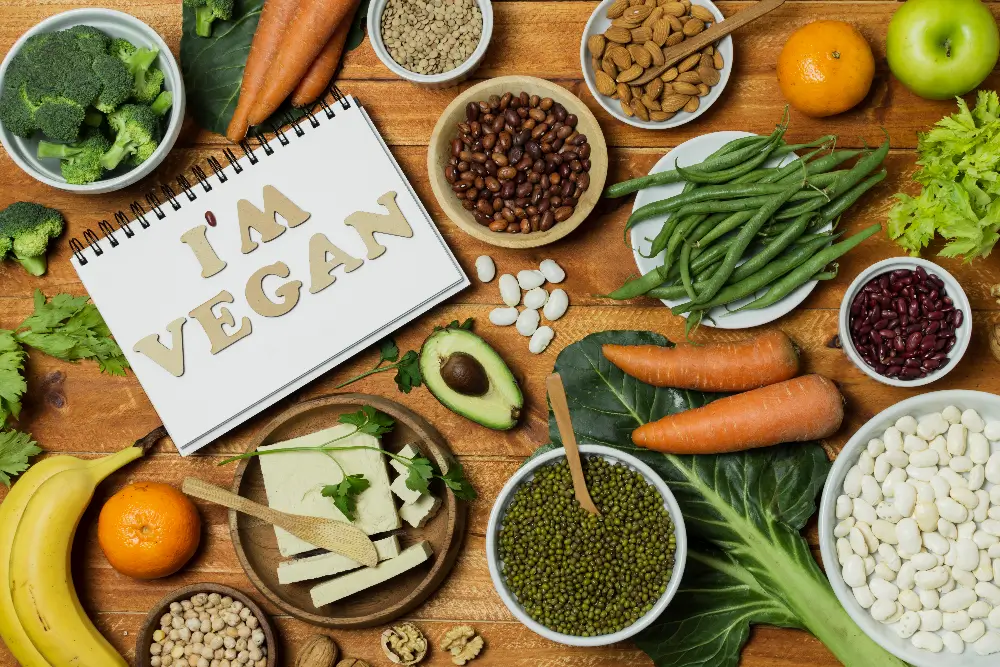
Table of Contents
Understanding Vegan Protein Sources
Making the switch to a vegan lifestyle isn’t a guarantee that you’ll lose your proteins. The world of plants is packed with protein-rich food items. They are found in grains, legumes in nuts, seeds, and legumes. These are all great for health and wellbeing.
What Makes a Protein Vegan?
The vegan proteins are derived from plants and are not found in animal protein sources like eggs, meat, as well as dairy. They can be found in food items like nuts, legumes seeds, grains as well as soy-based items. By choosing vegan protein, you can indulge in a plant-based diet, without being deficient in nutrients.
Benefits of Plant-Based Proteins
Plant-based protein sources can be extremely beneficial for your health. The vegan diet is able to help to lower cholesterol, regulate blood sugar, and lower belly fat. They are also stuffed with vitamins, fiber and minerals, which makes it a better choice over animal protein.
Common Myths About Vegan Proteins
Some people feel that vegan proteins do not meet the requirements or are deficient in the essential amino acids. However, if you follow a well-balanced vegan diet that incorporates a range of vegan foods that are plant-based, you’ll obtain all the protein needed. Your body will get the amino acids that it requires to function properly.
Legumes: A Rich Source of Protein
Legumes like lentils, beans, as well as chickpeas, provide protein-rich foods. They provide 15-18g of protein per cooked cup. The food is also packed full of complex carbohydrates as well as fiber, folate, iron and other minerals. The addition of legumes to your diet could lower cholesterol, manage blood sugar, and decrease blood pressure.
Types of Legumes to Consider
There are numerous legumes that you can test, each one with their own flavor and advantages. Beans like black beans taste creamy and lentils are a bit nutty. earthy taste. You can try chickpeas, kidney beans as well as split peas and Edamame for your favorite.
Cooking Tips for Legumes
Legumes are delicious, however the way you cook them is vitally important. The overnight soak helps their cooking time faster, and they are easier to absorb. Making use of a pressure cooker may help speed cooking. By planning your meals it is possible to add high-protein foods into your diet.
Nutritional Profile of Legumes
Legumes aren’t just rich in protein. They’re also loaded with complex carbs to provide energy, fiber for digestion, as well as minerals that are essential for well-being. They are an essential component of a healthy, vegan diet.
Nuts and Seeds: Healthy Protein Options
The seeds and nuts are loaded with protein from plants, as well as healthy fats as well as minerals. They’re excellent to eat for vegetarians or vegans. We’ll look at the top options and ways to incorporate them into your daily meals.
Top Nut and Seed Choices
Hemp seeds can be a powerful source of protein and contain the amount of 9g protein contained in three tablespoons. The pumpkin seeds contain 8 grams of protein per 1 ounce. Almonds, peanuts, as well as sunflower seeds have 7 to 9 grams per one ounce. Cashews are another option and flaxseeds as well as hazelnuts and walnuts.
Creative Ways to Use Nuts and Seeds
Seeds and nuts are adaptable. Sprinkle them over salads, or blend them into smoothies. They’re a great topping for yogurt, oatmeal or baked items. Also, they make an excellent snacks or a the perfect trail mix. You can try different tastes and textures to make your food exciting.
Nutritional Benefits
The seeds and nuts are full of good fats, which can reduce inflammation as well as improve the health of your heart. They also contain minerals, including iron, magnesium and zinc. Incorporating a range of seeds and nuts to your food plan can help ensure that it is balanced and healthy.
Whole Grains: More Than Just Carbs
Whole grains offer more than simply carbohydrates. They’re loaded in plant-based protein and essential nutrients. The foods like amaranth, quinoa and wild rice are excellent for your health.
Best Whole Grains for Protein
Amaranth and Quinoa are both full proteins. This means they are a complete protein, which means that they contain all nine of the essential amino acids. They’re gluten-free, and they provide eight to nine grams of protein in a cup. Oats, wild rice and buckwheat provide between 6 and 12 grams of protein in each serving.
Cooking Methods for Whole Grains
Making whole grain pasta is a breeze. They can be cooked in a steamer, boil or pressurize the grains. A variety of methods will aid you in finding the best method to relish their distinctive tastes and textures.
Quinoa: A Complete Protein
Quinoa is unique due to its complete protein. Quinoa has eight grams of protein for each cooked cup. This gives your body the amino acids that it requires. It’s ideal for vegans and vegetarians seeking high-quality vegan proteins.
Tofu and Tempeh: Soy-Based Powerhouses
Tempeh and Tofu are two proteins from plants that have several advantages. They are both made from soybeans, however, they’re processed in a different manner. Tofu is custardy and soft it is made of curdling soymilk. Tempeh is more firm and finer, resulting from the fermentation process of whole soybeans.
Differences Between Tofu and Tempeh
Tempeh contains more protein than tofu. It has 17 grams per 3-ounce portion. Tofu is 8 grams. Tempeh also contains more fiber, iron and probiotics derived from fermentation. Tofu is lower in calories but has greater calcium as well as vitamins.
Cooking Techniques for Tofu and Tempeh
Tempeh and tofu can be excellent to cook with in the kitchen. Tofu can be marinated grill, or baked. It’s delicious in stir-fries too. Tempeh can be cut into slices and pan-fried, or crumbled into recipes.
Nutritional Advantages of Soy Products
Tofu and tempeh are rich in protein. They contain all amino acids that are required. Additionally, they contain isoflavones that are beneficial for your bone, heart, as well as cancer prevention. A healthy diet with isoflavones could be delicious and nutritious.
Protein-Rich Vegetables You Might Overlook
It is commonplace to overlook vegetables in the context of plants-based protein sources. However, many vegetables contain protein. Incorporating these vegetables into the menu will boost your protein intake, and also provides additional fiber, vitamins as well as antioxidants.
Best Vegetables for Protein Intake
The broccoli, the spinach, Brussels sprouts, and green peas are among the top choices to get protein. Spinach provides five grams of protein for each cooked cup. Green peas provide 9 grams in a cup. Broccoli as well as Brussels sprouts are also a good source of 5 grams as well as 5.5 grams of protein in a cup, respectively.
Fun Ways to Incorporate Vegetables
Add these vegetables into salads, stir-fries smoothies, or roasted mix-ups. Also, you can try innovative recipes that show off the distinctive flavors and textures of these veggies.
Nutritional Benefits of Protein-Rich Veggies
These vegetables aren’t just rich in protein. They also contain vitamin and fiber as well as antioxidants. Consuming a wide range of protein sources is beneficial to the health of your body. They improve digestion, nutrient absorption and immunity.
Plant-Based Protein Supplements
For those who are vegan and interested in health Plant-based protein supplements can be a good alternative. They allow you to obtain more protein using plant sources. There are a variety of hemp, pea, or soya protein powders.
Types of Protein Powders Available
Hemp, rice, pea and soy are the most well-known proteins made from plants. Each one has their own advantages in terms of nutrition. The protein in peas is a good source of amino acids as well as protein. The protein in hemp adds healthy fats to your daily diet. Soy protein is widely known for its complete protein.
Choosing the Right Protein Supplement
If you’re looking for a plant-based protein be sure to look for protein with high levels of protein, and minimal sugar levels or artificial ingredients. Examine for the amino acid profiles as well as the protein content. Additionally, check if the product is a probiotic or fiber source. Select products that have been tested by third parties for the highest quality. By reading the labels, you can find out the most effective proteins, vegan protein powder as well as protein sources that are plant-based that are suitable for your needs.
How to Use Protein Powder in Your Diet
Incorporating proteins in your diet is simple. Add them to smoothies as well as oatmeal and baked items. Start small and increase it if you require it. They’re ideal for athletes as well as any person who needs more protein for development of their muscles.
Meat Alternatives: Satisfying Options
The meat alternatives are growing well-known as more people opt for vegetarian diets. They provide the same protein as real meat. Seitan is made of wheat gluten is an excellent option. It contains as much as 25g of protein in a cup, which makes it a fantastic vegetarian protein option.
Popular Meat Substitutes
There are a myriad of alternatives to meat today. Plant-based sausages, veggie burgers and mock meats are popular. They contain the same protein as animal products, but have less fat and contain no cholesterol.
Comparative Nutritional Analysis of Animal Proteins with Human Proteins
Alternative meat products may not taste as authentically as real meat. They are nevertheless healthy and beneficial for our planet. The tempeh, tofu and lentils contain as much or more protein as meat.
Recipes Featuring Meat Alternatives
Alternative meats can be utilized in a variety of recipes. You can try them as dishes like stir-fries, sandwiches and even dishes with meat in them. In this way, you’ll be able to cook delicious and plant-based foods which are suitable for your lifestyle.
Dairy Alternatives: Calcium and Protein Combined
If you’re following a plant-based diet dairy products are excellent for calcium and protein. Soymilk, for instance contains seven grams of protein in a cup. It’s also loaded with vitamin B12 and calcium. Alternative options include almonds Oat, pea, or almond protein milk all have their own health benefits.
Best Plant-Based Dairy Options
If you are looking for alternatives to dairy make sure you choose ones that contain vitamin D and calcium. This is beneficial for healthy muscle and bone and is even more beneficial without dairy. Chia seeds and almonds and dried figs can be beneficial for calcium.
Nutritional Considerations
Dairy food is loaded with essential nutrients such as calcium, protein and vitamins. Alternative dairy products may not contain similar nutrients, however some are supplemented with the same advantages. Soymilk, for example is able to contain as much calcium and vitamin D as cow’s milk if it is fortified.
Creative Uses for Dairy Alternatives
Make use of dairy-free alternatives in a variety of recipes. Blend them in smoothies, bake them with the ingredients, or even add them to coffee. They are often used to replace traditional dairy products and make it possible to transition to plant-based.
Combining Protein Sources for Maximum Impact
The process of creating a balanced vegan diet that is protein-rich is an exciting challenge. The trick is mixing various plant-based proteins in order to obtain the amino acids in all. In this way, you can will make vegan dishes the most nutritious you can get.
How to Pair Different Proteins
Combining whole grains with legumes is an excellent idea. Consider a bowl of rice and beans, or include seeds or nuts in the salad. The mix will provide all amino acids that your body requires.
Meal Prep Ideas for Balanced Protein
If you are vegan and want to prepare your meals Mix in a variety of proteins-rich food items. For example, a quinoa bowl that includes tofu, vegetables or a lentil soup made along with bread made from whole grains is fantastic. They provide a healthy eating plan with lots of protein.
The Importance of Variety in Your Diet
The variety of protein sources available makes your meals enjoyable and complete. Add grains, legumes as well as nuts, seeds and other protein-rich foods into your diet. It’s not just delicious, but it also offers your body the nutrition it needs.
Conclusion: Embracing Vegan Protein in Your Life
The benefits of a vegan lifestyle are that you can provide your protein needs using plants as the main source. Proteins from these sources are beneficial for you and the environment. Investigating plant-based proteins could create cooking that is more entertaining as well as nutritious.
Final Thoughts on Vegan Proteins
A vegan diet could be a challenge for your nutrition. With the proper plan and a variety of foods it is possible to get all the nutrition you require. Whole grains, legumes seeds, nuts, as well as soy-based products are essential for a healthy diet.
Encouragement to Explore Plant-Based Diets
No matter if you’re new to the vegan lifestyle or are already an expert the journey you take is your own. Explore new recipes, try out different ingredients appealing recipes, and find out which ones work for you. By committing yourself to a creative approach you will reap the benefits of a vegetarian life style.
Resources for Further Learning
Are you interested in learning more about the benefits of vegan proteins as well as nutrition? Consult a dietitian who is knowledgeable about vegan diets. Explore vegan cookbooks, and browse websites for useful information on nutrition for vegans. Being a part of a group of people can assist you in achieving success when you embark on a vegan path.
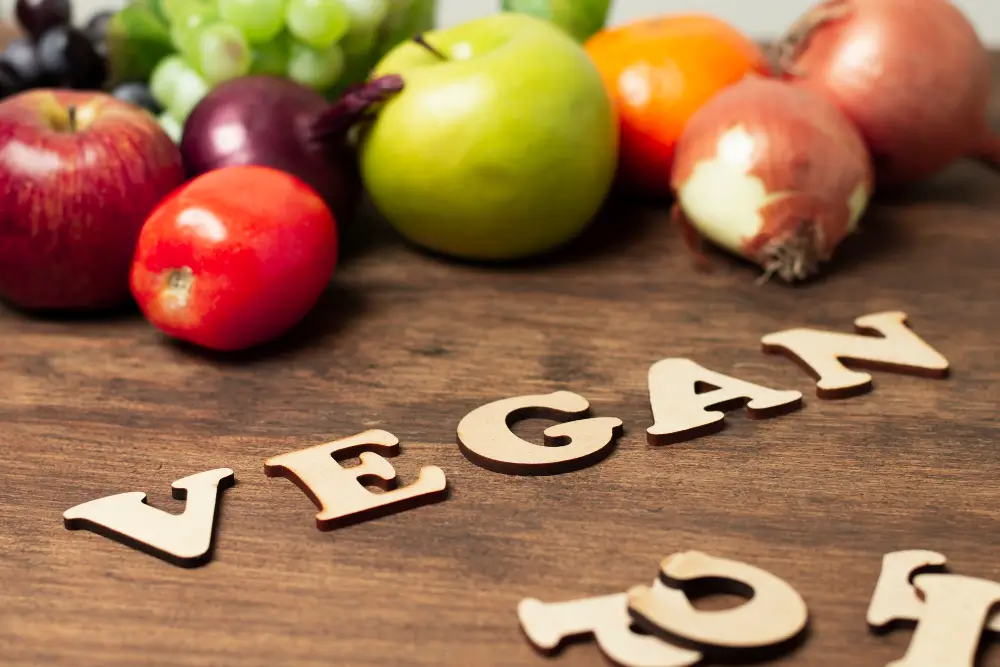
FAQ
What are the most effective vegan protein sources that are plant-based? vegan diet?
Beans, lentils as well as chickpeas are great selections. Nuts and seeds, complete grains like tofu, quinoa as well as tempeh are good. In addition or green peas as well as the protein sources that are plant-based are excellent choices.
What can vegan food choices do to ensure sufficient protein?
A diet that is vegan can fulfill proteins needs by eating the right food items. Combine grains and legumes to get the complete amino acid profile.
What are the advantages of protein derived from plants versus the animal-based proteins?
Plant-based proteins are better for you. They reduce cholesterol levels and boost blood sugar levels. They can also lower the risk of developing chronic diseases as well as being better for the environment.
Exist any myths or misinformation regarding vegan protein?
There are those who believe that vegan diets are lacking in protein, or are “incomplete.” With a bit of the right planning, veganism will meet the protein requirements of all.
What are the most effective varieties of legumes that provide protein?
Lentils, beans, and chickpeas are loaded with protein. They provide 15 to 18 grams of protein for each cooked cup. They’re also packed with vitamin and fiber.
How do I include more seeds and nuts into the vegan food I eat?
Incorporate seeds and nuts into smoothies, salads, or baked good. They’re full of good fats, protein and healthy fats and contain 7-9 grams per serving.
What are the advantages that include whole grain in a vegan-friendly diet?
Whole grains, such as quinoa or amaranth have a high protein content. They provide 8-9g of protein for each cooked cup. They also contain B vitamins and fiber.
What is the difference between tofu and tempeh? distinguish themselves as vegan protein sources?
Tofu contains 7 grams of protein for 3 inches. Tempeh is made of fermented soybeans has 17g of protein for a half cup. Both of these are fantastic sources of protein as well as providing other nutrients.
What are the most surprising sources of protein found in vegetable?
Spinach, green peas broccoli, Brussels sprouts contain protein. They provide 5-9g of protein for each cooked cup. They’re also loaded with vitamin and fiber.
Can plant-based protein supplements be utilized in an vegan diet?
The powders of vegan protein are a great addition to baked or smoothie items. They can help satisfy protein requirements specifically for athletes.
What are the most popular vegetarian alternatives to meat?
Seitan, veggie-based burgers and sausages made from plant matter are very extremely popular. They provide protein, but with none of the saturated fats and cholesterol that are found in animal meats.
What are the dairy alternatives that can help in the intake of protein veganism?
Soy milk, a plant-based alternative to dairy products, and almond milk contain 7g of protein in a cup. Dairy-free yogurts and cheeses can also be excellent sources of protein.
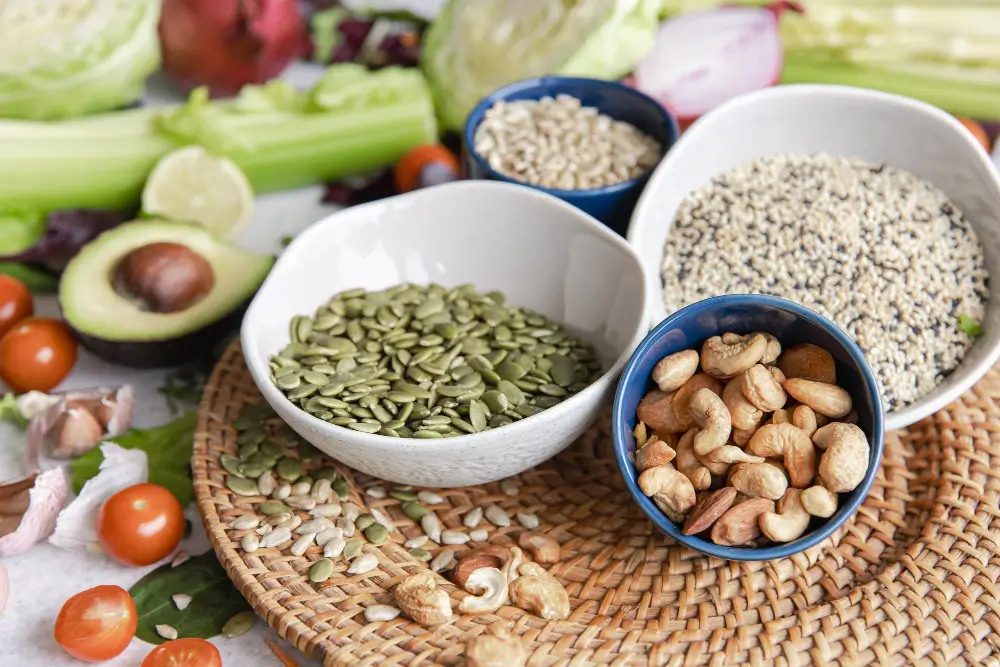




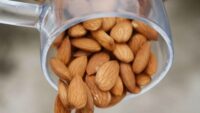



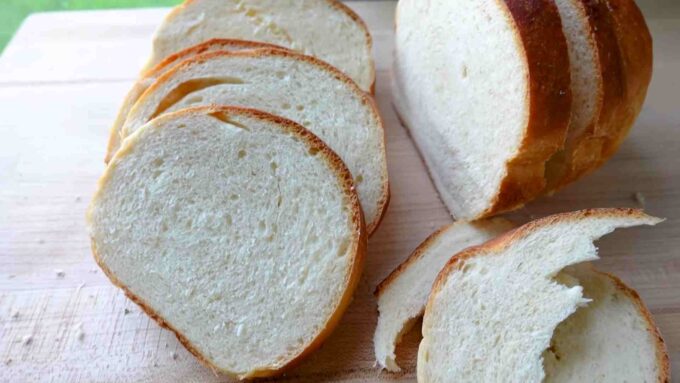
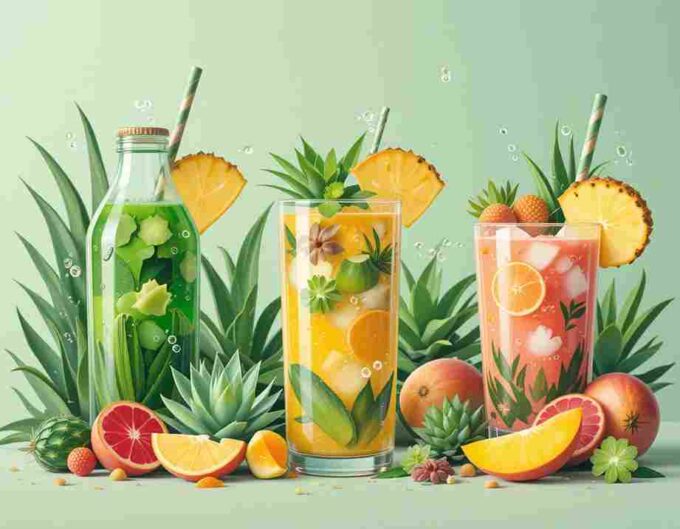
Leave a comment